PSVR2 review: is Sony PlayStation VR2 the best virtual reality ever?
It's pricey, it's brilliant, but it won't be for everyone: it's PSVR2 bringing virtual reality gaming to the PlayStation 5

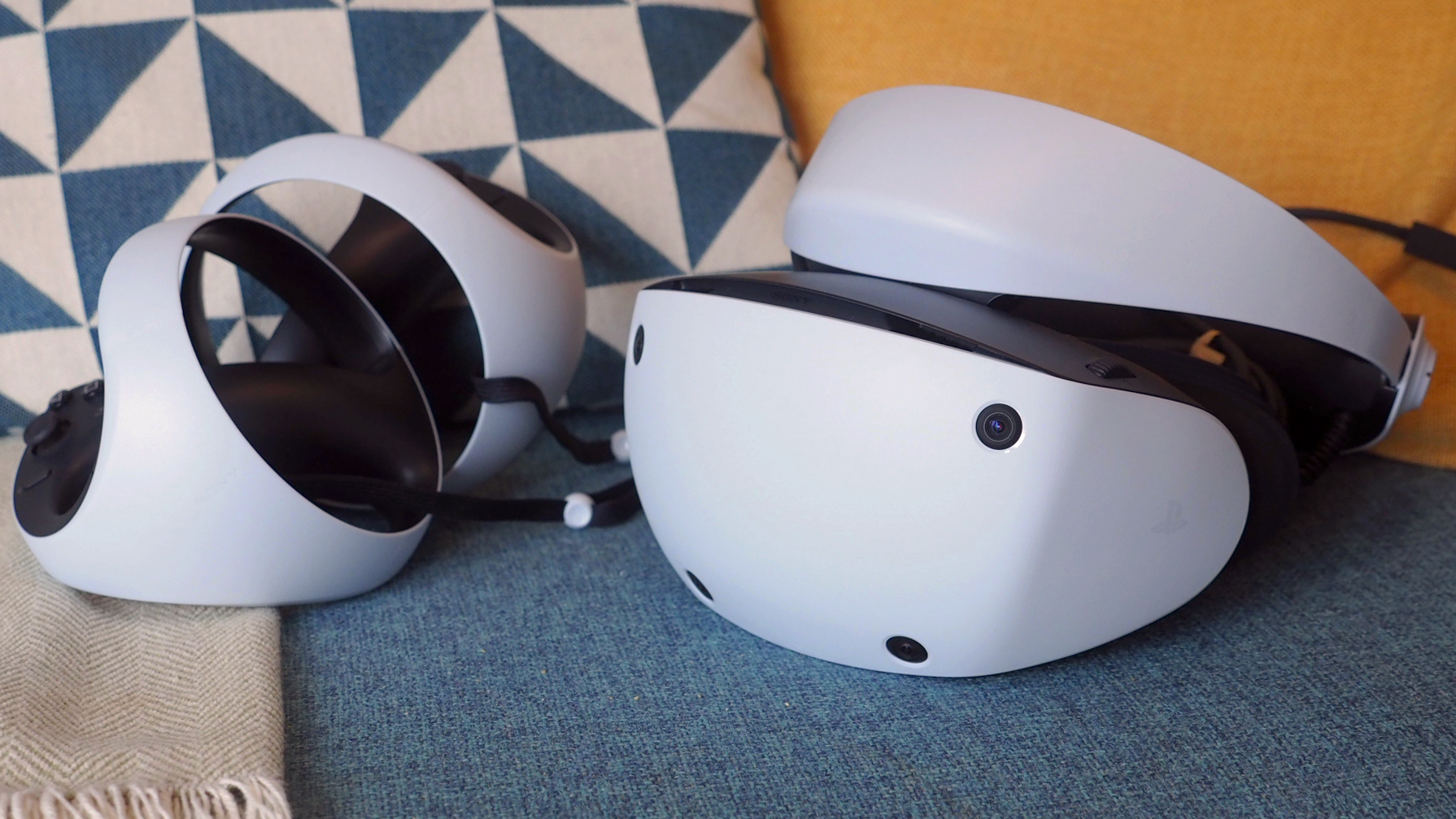
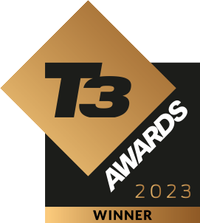
From the moment I first donned PlayStation VR2 and started playing Horizon: Call of the Mountain, it blew my mind. Sony has crafted a mighty impressive virtual reality kit for the PS5 that's entirely comfortable and has the scope to deliver truly immersive, impressively detailed games. However, the headset's price and the question mark over longevity means it's simply not going to be for everyone.
-
+
Incredible immersion and detail
-
+
Sony exclusive (Horizon) makes it a must-play
-
+
Actually good value against the PC competition
-
+
Inside-out tracking works well, eye-tracking is awesome
-
-
Costs more than a PS5 console
-
-
Limited first-party titles at launch
-
-
PSVR2 Sense controllers' battery life
-
-
VR motion sickness is real for many people
Why you can trust T3
My other half removes the PSVR2 headset and says, "I think that's the best tech you've ever shown me." That's quite the statement, given I've been writing about and reviewing consumer technology and videogames for more than 12 years now. But there you have it: from even a total non-gamer's perspective the PlayStation VR2 is, like, the best thing ever. Or maybe it was the gin and tonics talking.
Either way: in fairness I was uber-excited when Sony's PSVR2 arrived a full two weeks prior to its official on-sale date. Having first played Horizon: Call of the Mountain at CES 2023 (a major international tech show) I was already blown away by that experience. It's a rare adult feeling to get so genuinely hyped for a product launch, but that's what happened with me and PSVR2.
But even after unboxing PSVR2 (and pondering what accessories you'll need to buy) I still had oh so many questions that the last two weeks have been incredibly useful in answering. How badly would I get motion sickness? Would I actually want to don a headset to play? Are there enough exclusive games? What about future titles?
All this and more I answer in this PlayStation VR2 review. So is Sony's new virtual reality headset the new must-have PS5 hardware accessory or will it become the latest dusty-at-the-back-of-a-cupboard piece of kit before you know it?
Sony PSVR2: Price & Availability
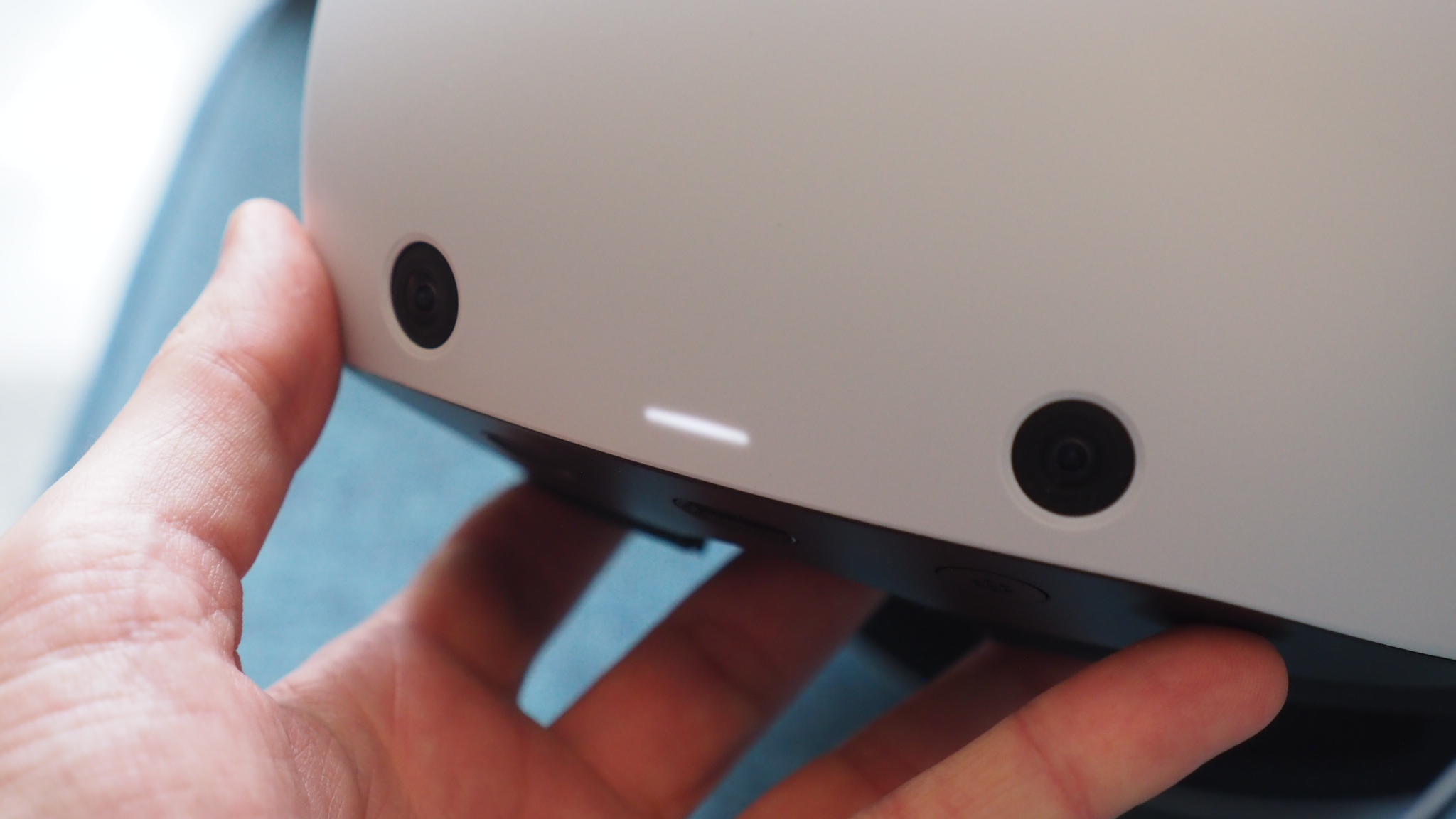
There's been plenty of discussion about whether PSVR2 is worth it, given its more-than-PS5-console asking price already. That's because PlayStation VR2 costs £529.99/$549.99/AU$879.95 – and that's without a game included, so you'll need to budget extra for your first title(s) too.
Now, I know, that's a lot of money. Especially in 2023, the apparent year of financial doom. I mean you could go out and buy a second PlayStation 5. Or, daresay, an Xbox Series X instead (I'm not trolling you, you could go play Halo Infinite, y'see).
But considering what you get PSVR2 is actually not overpriced – a comparable PC headset, such as the HTC Vive Pro 2, costs about double (and that's without considering the required PC hardware on top).
Get all the latest news, reviews, deals and buying guides on gorgeous tech, home and active products from the T3 experts
Sony PSVR2 review: Features & what's new?
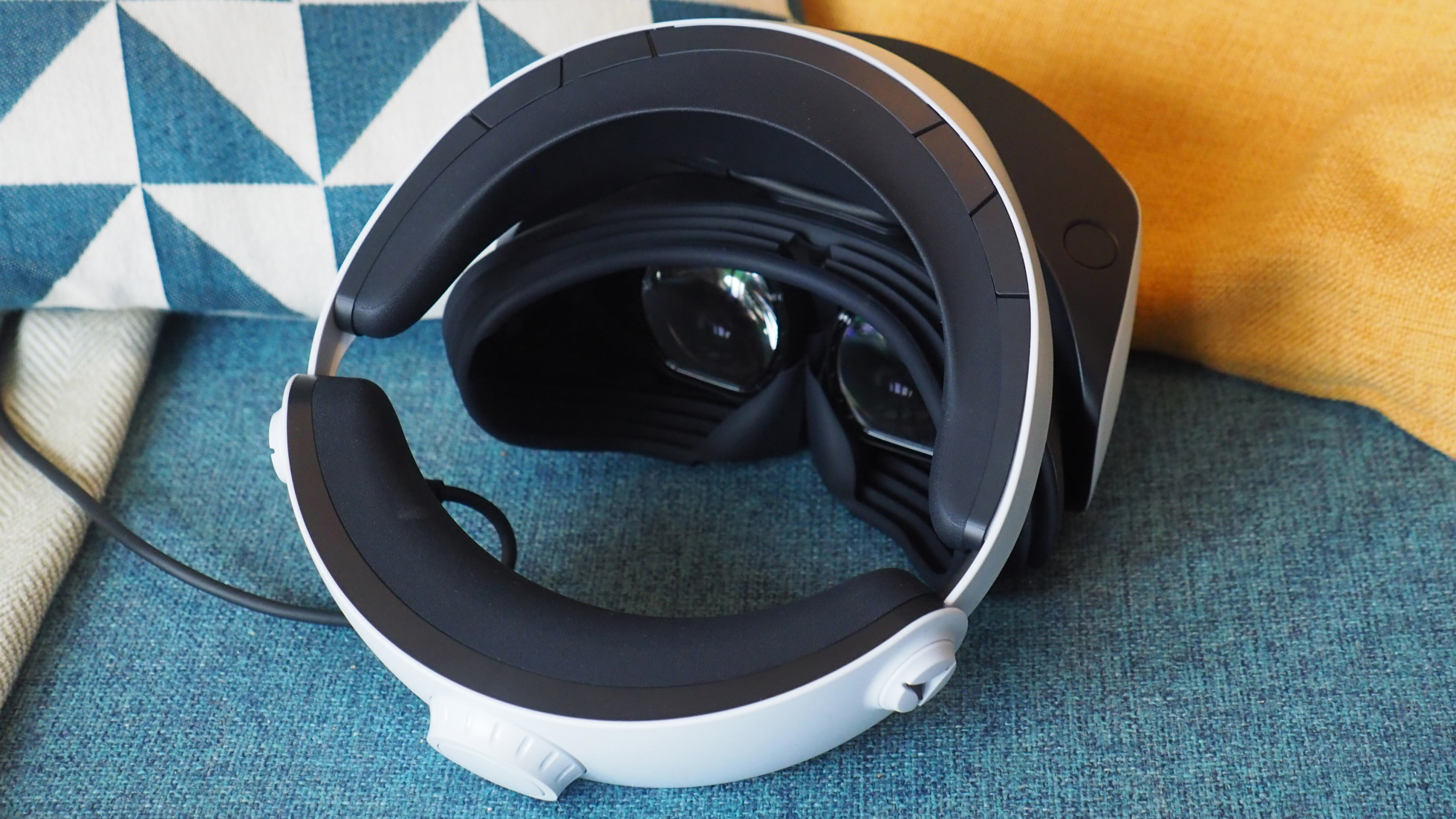
Just to be clear from the off: it's not really worth contemplating the original PlayStation VR for PS4 (which I was also excited about trying at E3 (a major videogames conference) back in, gosh, 2016), as PlayStation VR2 for PS5 (and only PlayStation 5, it's not backwards-compatible) is a whole other beast.
So what's new? Well, everything, as this is a totally new product. PlayStation VR2 includes two PSVR2 Sense controllers, which I'm going to call proper controllers, not those silly wand-like ones. The headset's resolution, at 2000 x 2040 pixels per eye is hugely detailed and will match or outclass much of the competition thanks to OLED panels with 90Hz/120Hz refresh rate.
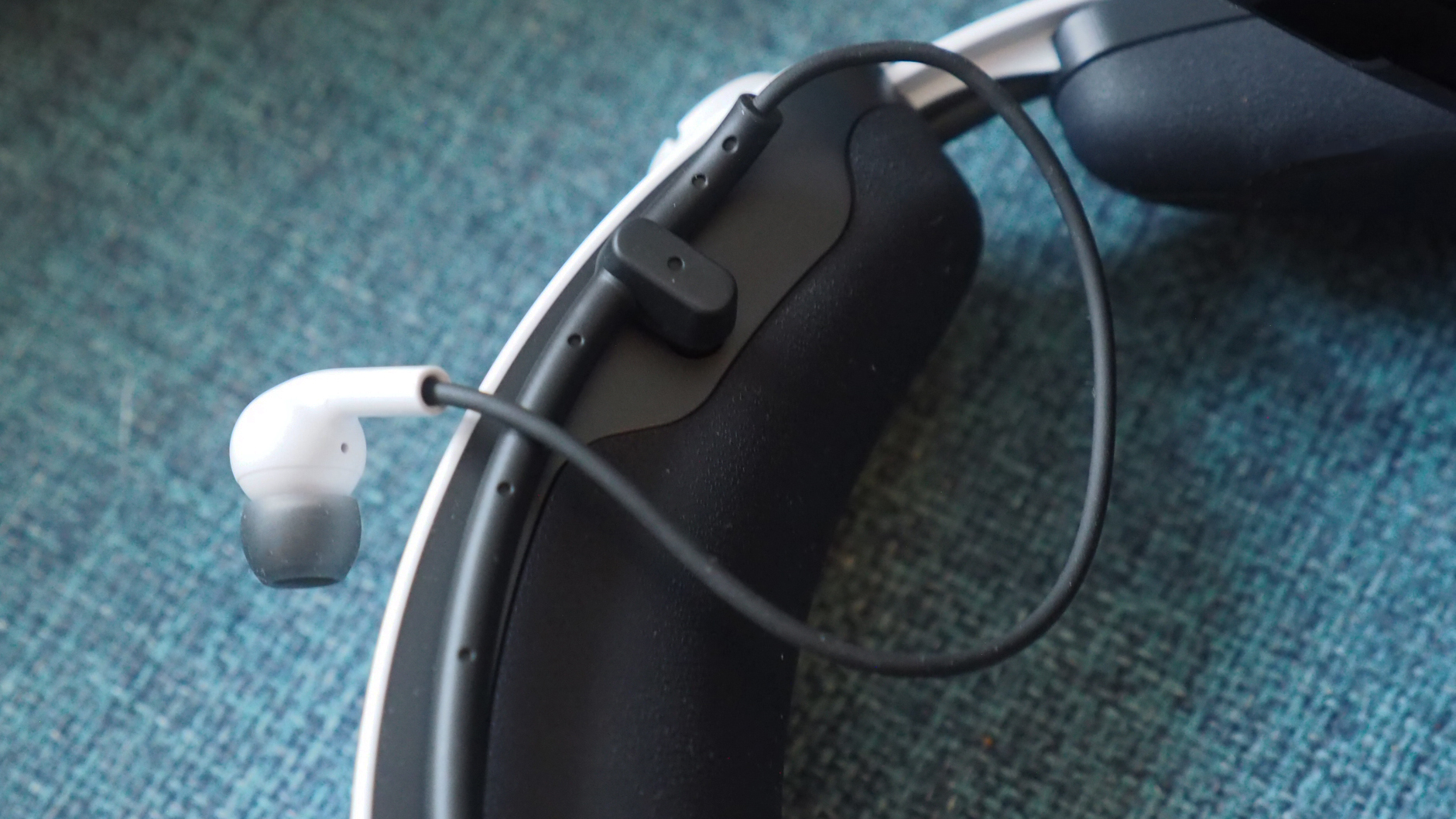

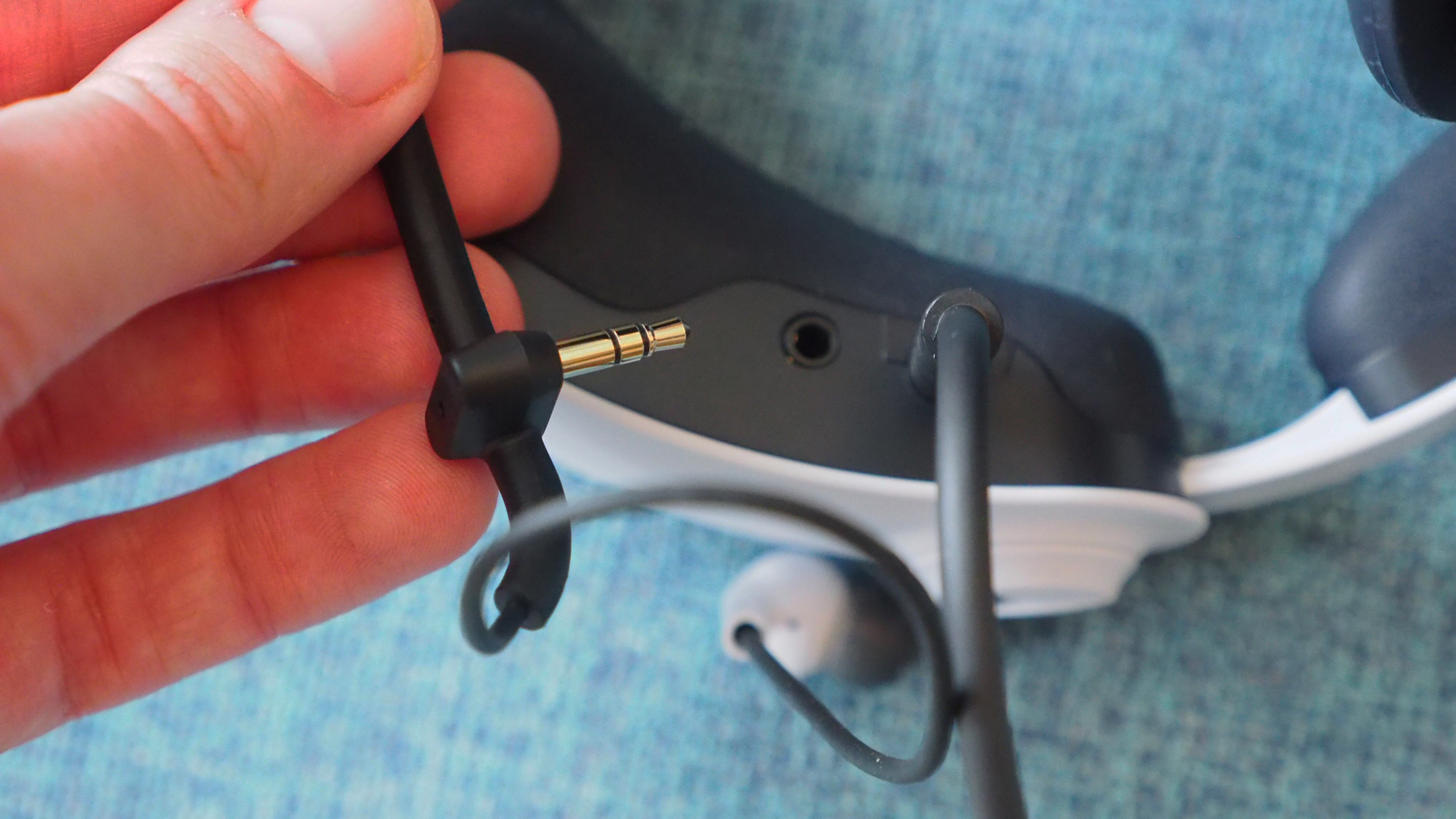
PSVR2 doesn't feature built-in speakers, which some will find surprising, but it does include a special set of in-ear headphones that connect perfectly to (and follow the shape of) the headset so they won't get excessively in your way.
I don't really like in-ear headphones, and while you could suffice with TV audio and sacrifice the immersive three-dimensional effect, I'd strongly suggest buying a Sony Pulse 3D Wireless headset for floaty-light audio without added wires.
Sony PSVR2 review: Setup & Comfort

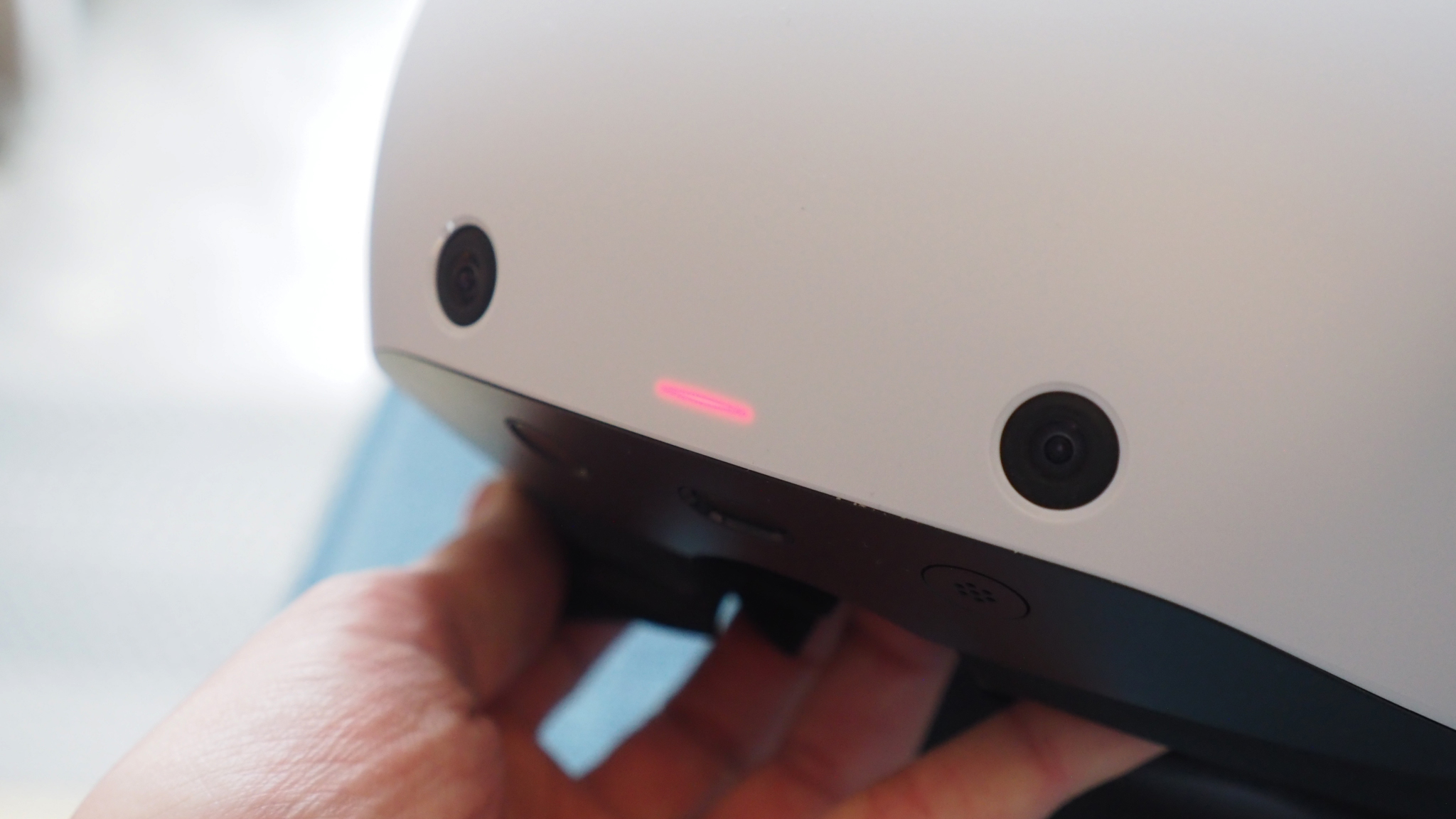



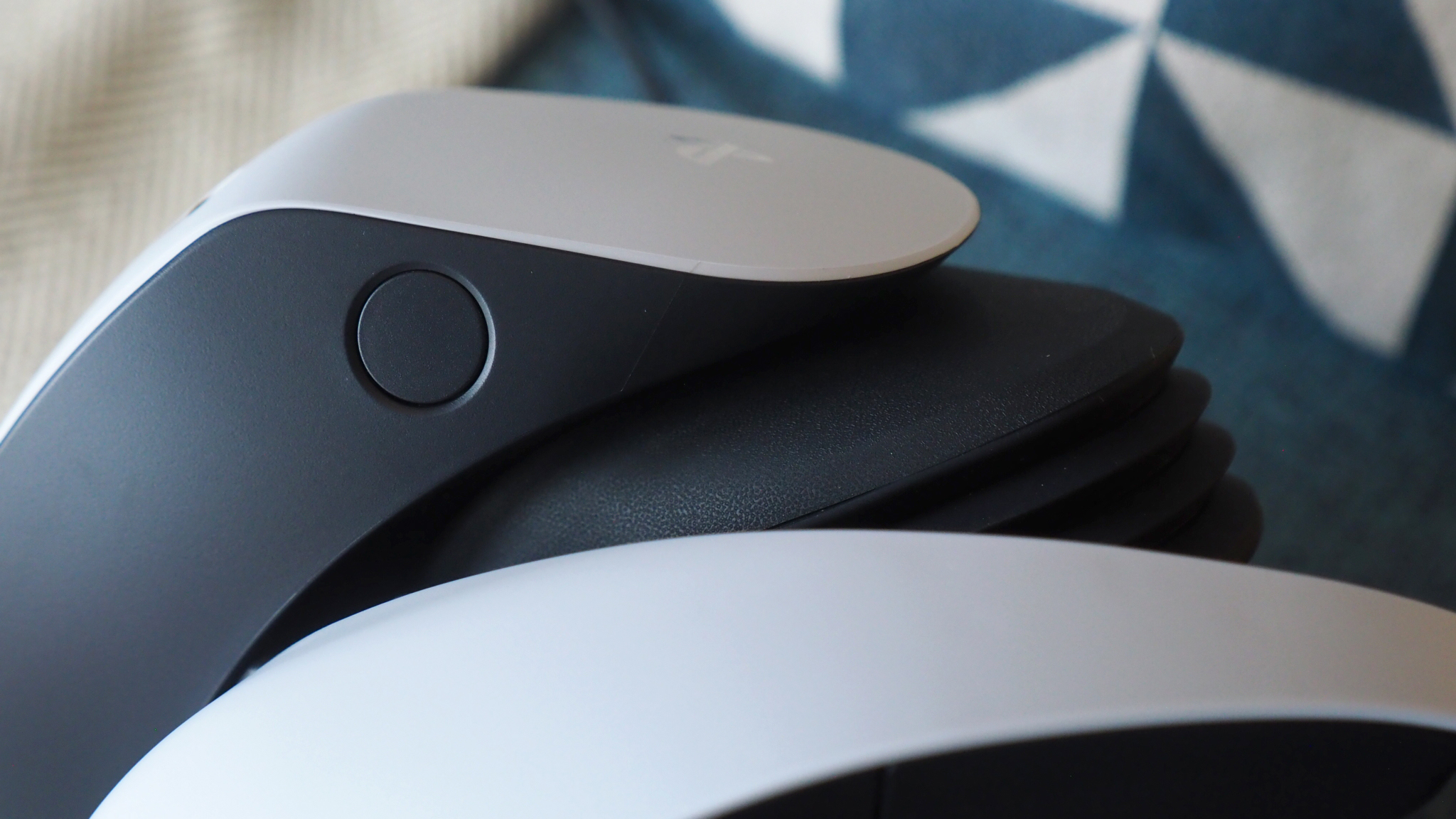

PlayStation VR2 uses inside-out tracking so you won't need to worry about any additional boxes or sensors around the room in order to plot your play area (it's all done with cameras), which I think is an essential for a virtual reality headset you can get into using in double-quick time. You may need to rescan a play-area or adjust its size (you really need a minimum of two metres squared without anything in the way) but it's easy to do with the PSVR2 Sense controllers.
The initial setup process, which you'll want to do for your specific PlayStation sign-in, is a little bit longer, but it's all hand-holding stuff that I found essential. There's an on/off button, which lives next to a passthrough button so you can always revert back to camera view if you need to take a 'real' look at the world around you at any given moment.
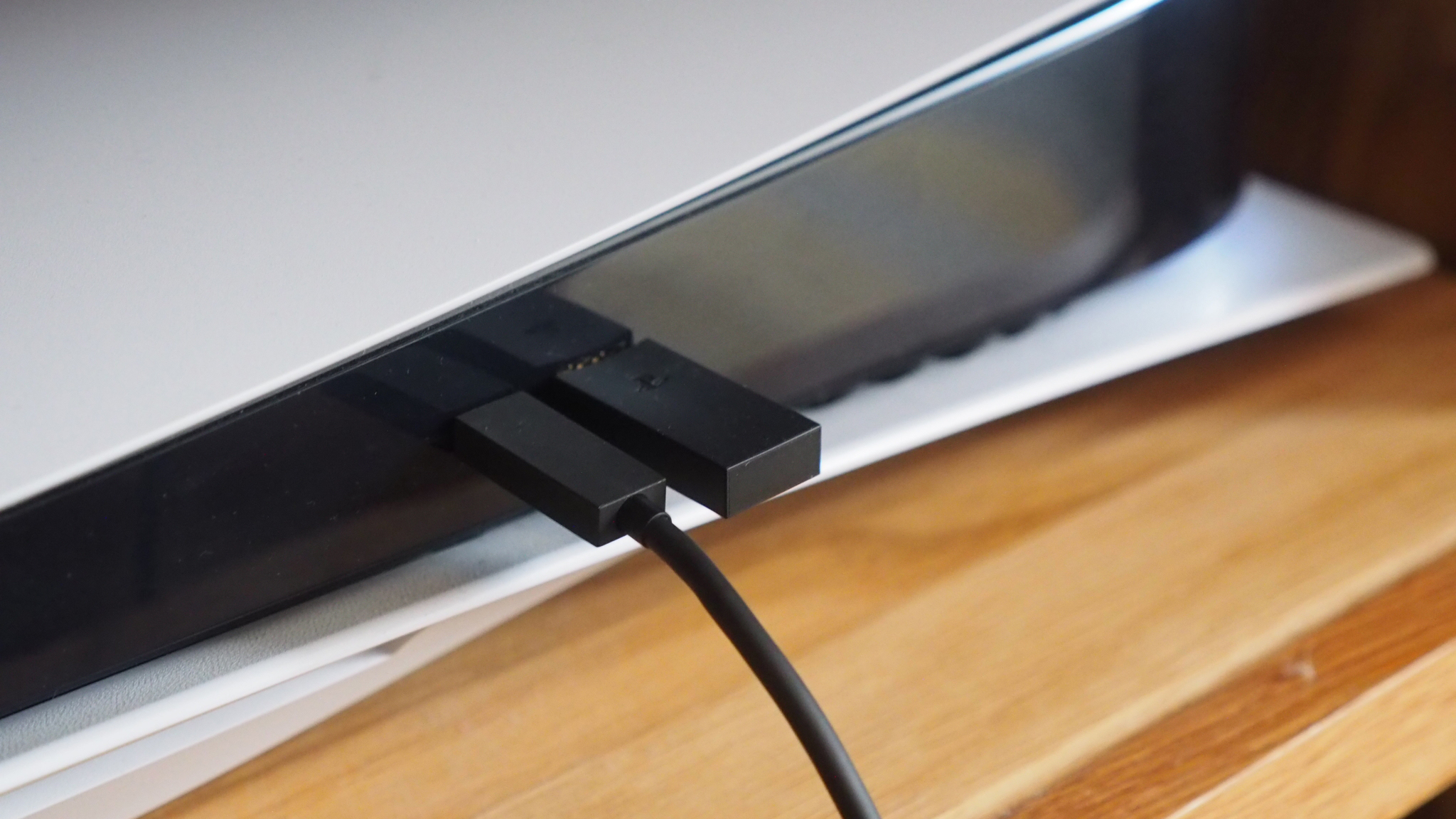
Before you get that far, though, you'll need to plug the PSVR2 into your PS5 console. It connects via the USB-C port on the front of the console, which delivers power to the headset and, yep, it'll need to remain plugged in during use. This is very much a wired headset, but as much as I could call that a gripe I've not found the 4.2-metre (or thereabouts according to my tape measure) to get in my way excessively.
The setup process takes you through fitting the headset, which has two release buttons – one on the visor, the other on the headband – to get a perfect, comfy fit. I must say this is a really comfortable headset, having worn a bunch in the past, although you'll need to get everything angled perfectly to avoid blur and aberrations in the visuals.
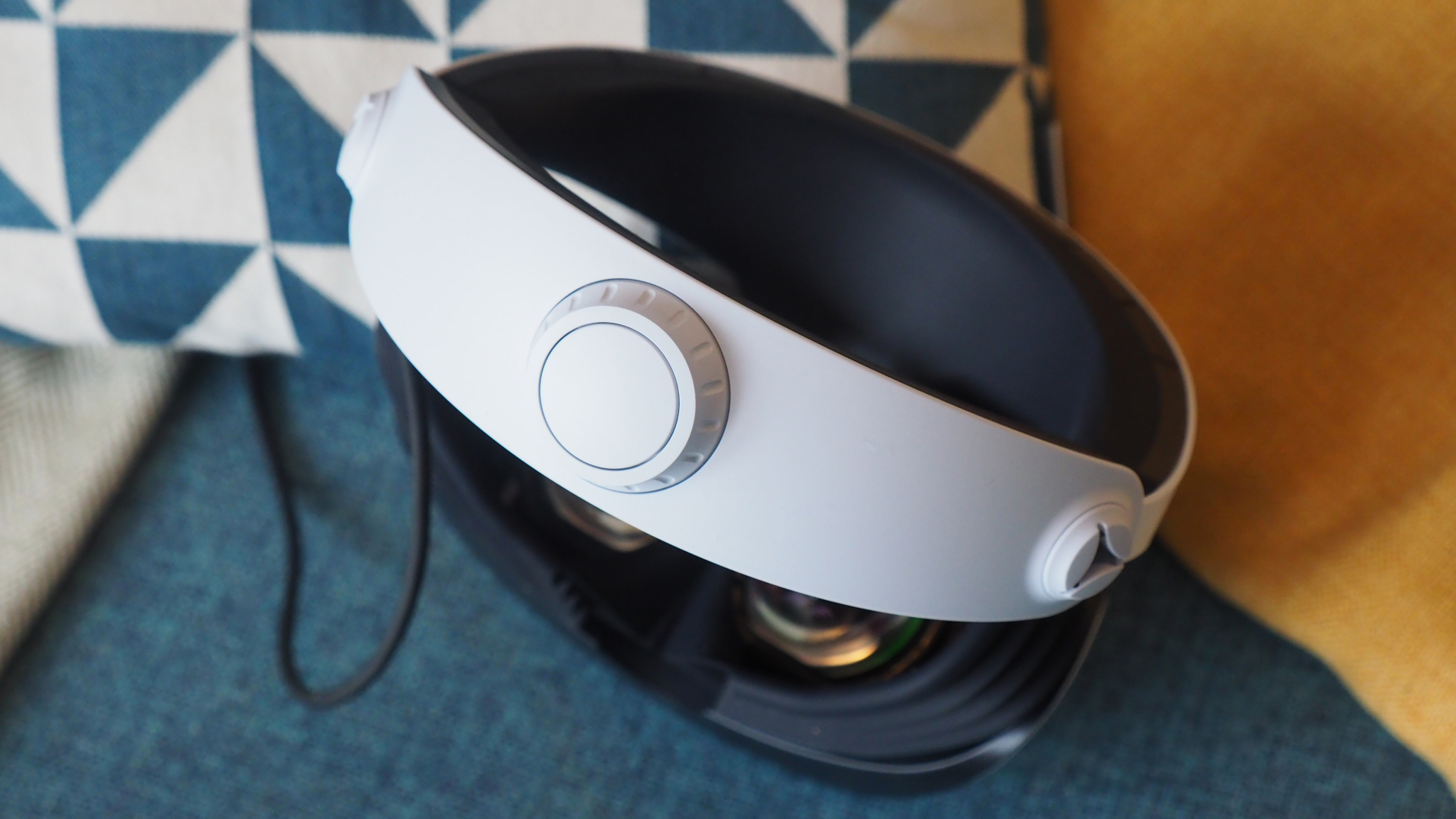
Tightening the headband, which has a screw-adjustment clamp on the back, is easy to overdo too – I found being delicate with it made for better comfort overall, even if the fit is less tight. Excessive light bleed is no bother with this headset either, thanks to super bellows blocking out ambient sources.
The PSVR2 Sense controllers also need to be paired, which at first requires plugging them into the PS5 console via the USB-A port on the front, then it's as simple as hitting the PlayStation button on each hand and pairing is instant. Just as with any DualSense controller, this button press will fire up your console each time once paired.
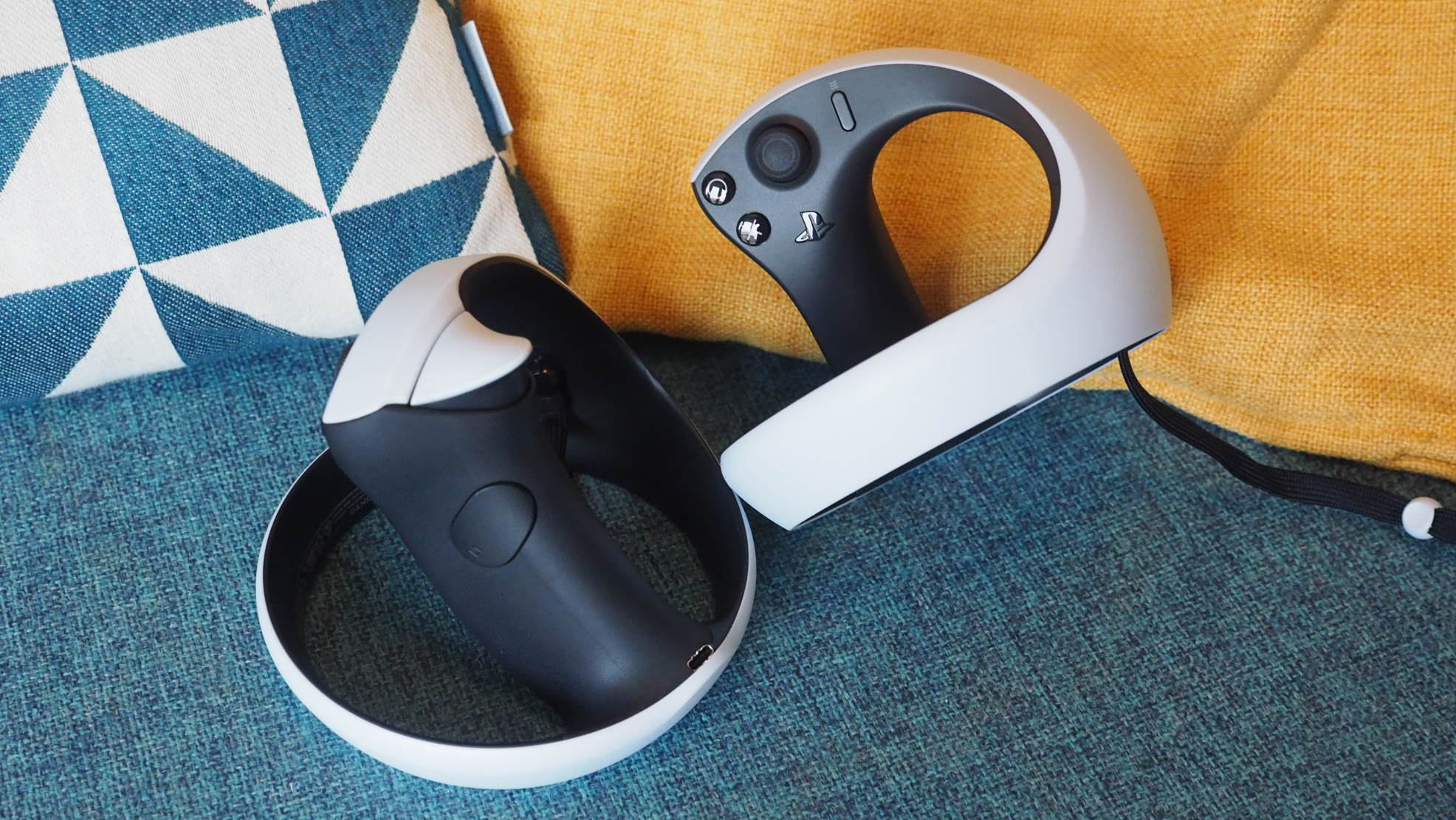

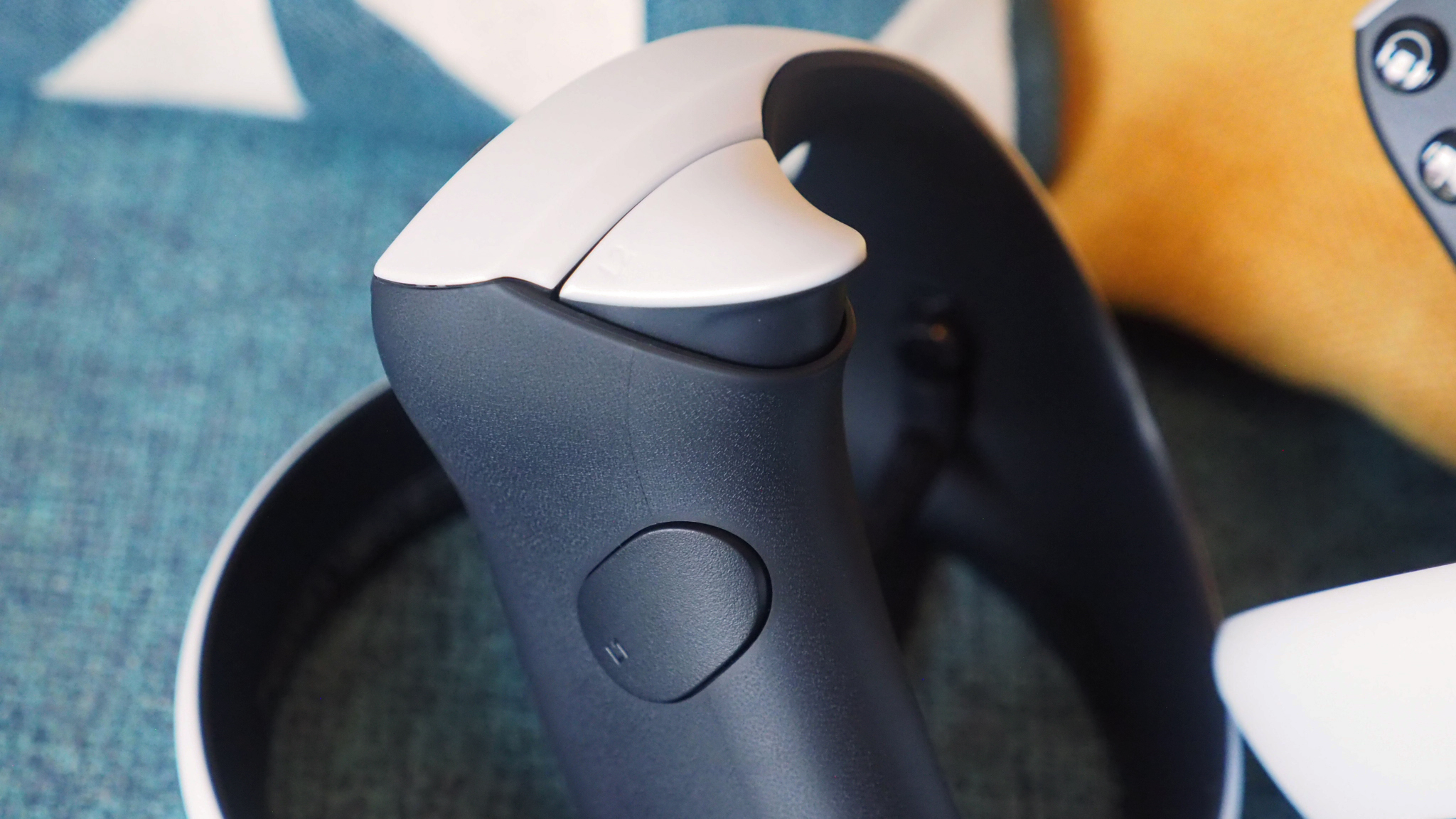
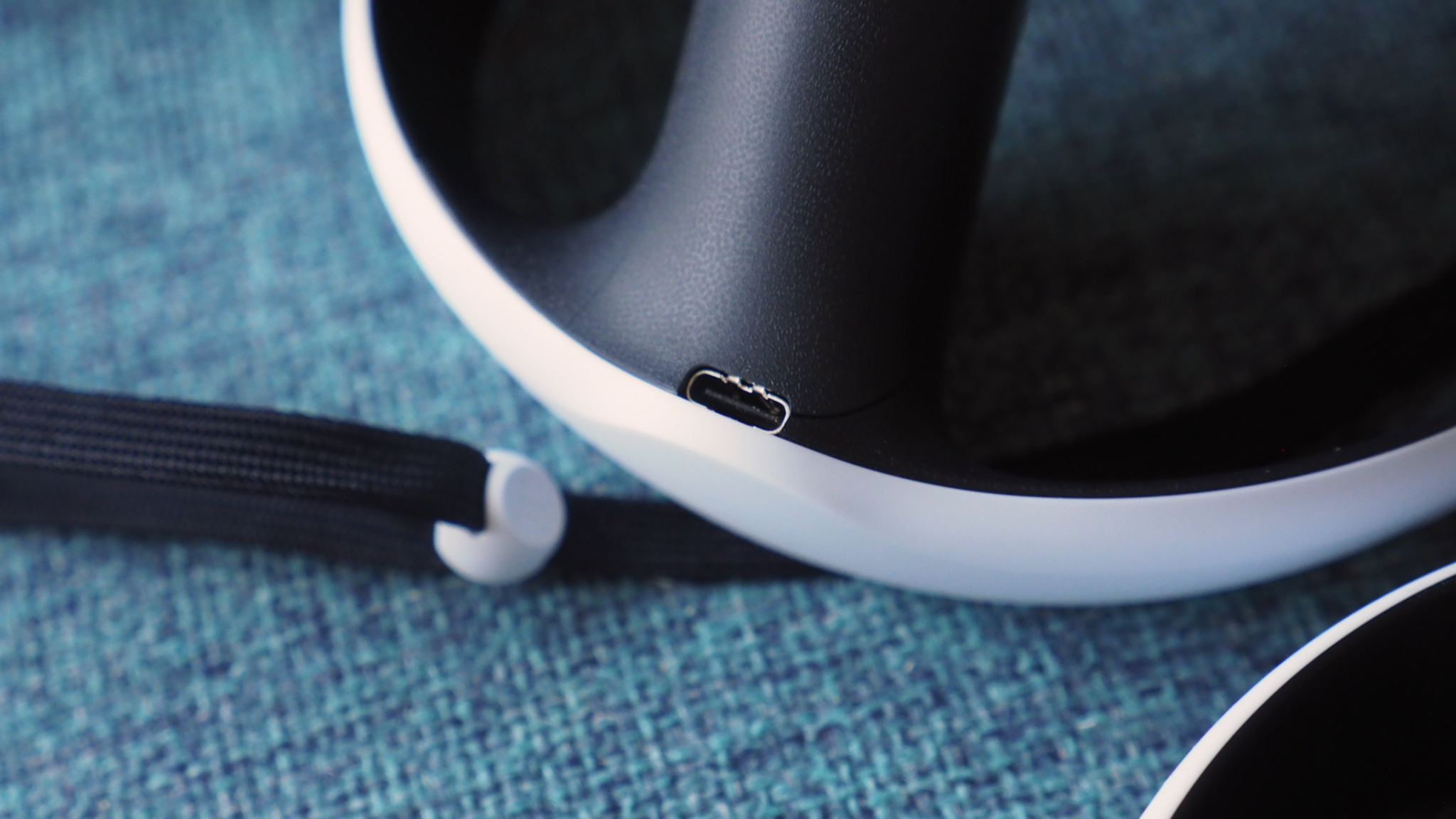

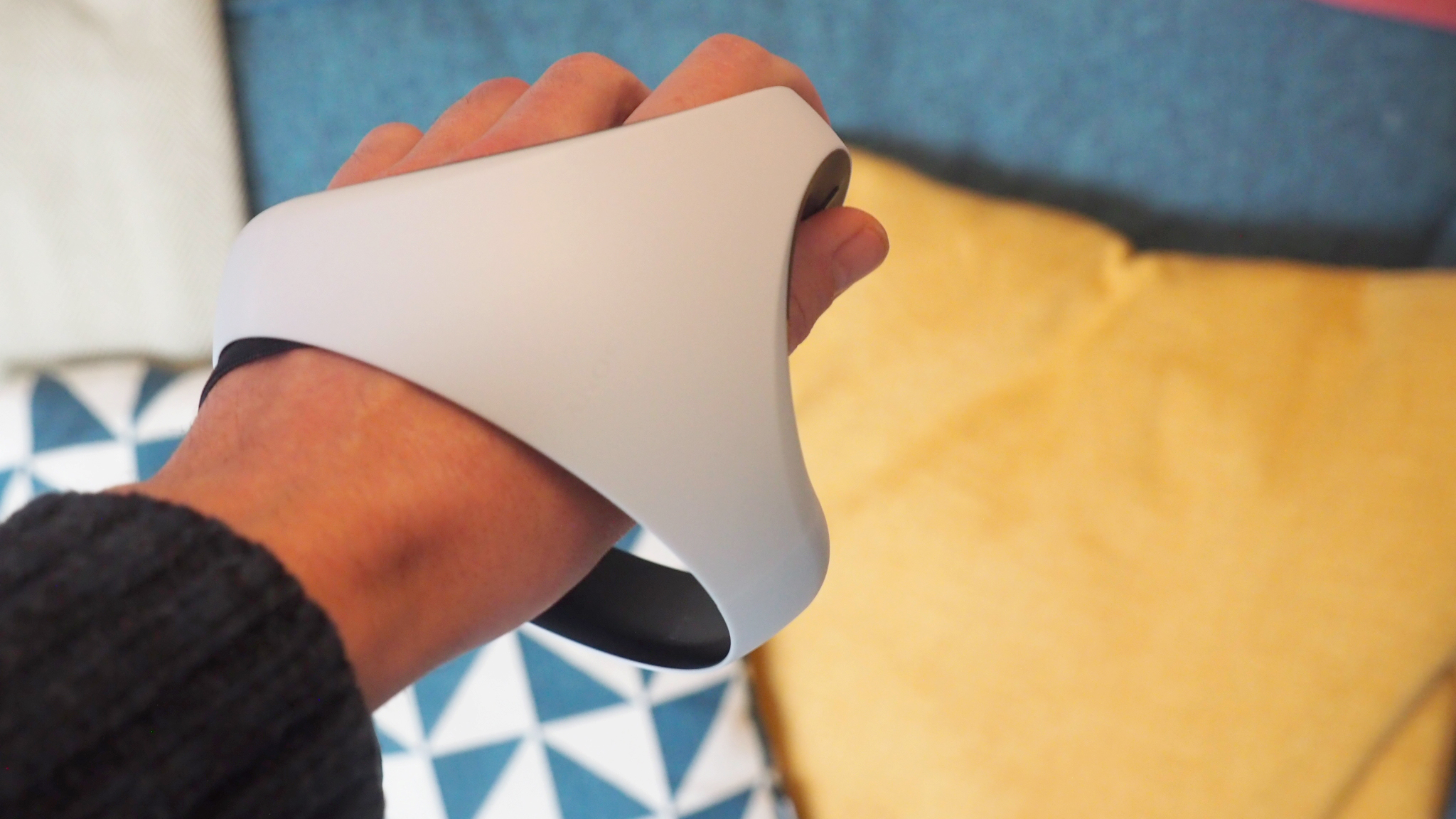
One other feature of the PSVR2 I love is its eye-tracking technology. The headset will identify your eyes and where they're looking, performing a one-off follow-the-dot setup procedure to ensure it's calibrated and in sync with where you look.
Eye-tracking in games is really useful for targeting, selecting options and such like, meaning you can often look rather than require additional in-game movement, which feels more natural.
Sony PSVR2 review: Performance

I'm basing the majority of this review on play-time with Horizon: Call of the Mountain because, and not to overmilk it or anything, I think this is the most beautiful VR game ever made. That's because it doesn't look 'typically VR', if you know what I mean, presenting full-colour palettes and fully-formed subjects, with no paring-down of details for the sake of motion comfort (that's achieved through a generally slower play-style compared to the Horizon open-world games).
If Sony didn't have Call of the Mountain ready to roll on day one then I'm not sure that PlayStation VR2's success would be as assured. It's really that important, because it's a first-party title that you can get nowhere else, it's a great IP in general, and I know that fans (just like me) will be keen to play through it. It lasts for around six hours or so, although I'll say I cannot commit to super-long play sessions for sake of still feeling like a real human being grounded on the planet.
You can see where I'm about to go here: virtual reality motion sickness is very real, people, and you may well suffer from it. When I tried out Star Wars: Tales from the Galaxy's Edge I quickly got those sweats and wondered if I was going to reach bucket territory levels. That one required a bit of a lie-down after, which isn't really what you want after a gaming session.
Horizon: Call of the Mountain, however, is a different beast: its walking motion is much slower, and while at times I was physically scared of jumping off ledges (yes, I'm a wimp and didn't want to fall over in the real world), the developer has been very courteous in delivering sensible slowdown segments and considered vignetting to help things flow and feel more natural. It does slow down the gameplay, though, but there is a 'Veteran' option for things to be speedier, if you can cope with it.
So the PlayStation VR2's performance, in the context of other virtual reality headsets, is super impressive. It's comfortable, it's adjustable, the resolution is mega, the immersion is super-wide and convincing, and referring back to the opening line of this review: even I felt, at times, like PSVR2 is the coolest piece of tech that 2023 will offer. It's an accomplished performer, that's for sure.
Sony PSVR2 review: The games
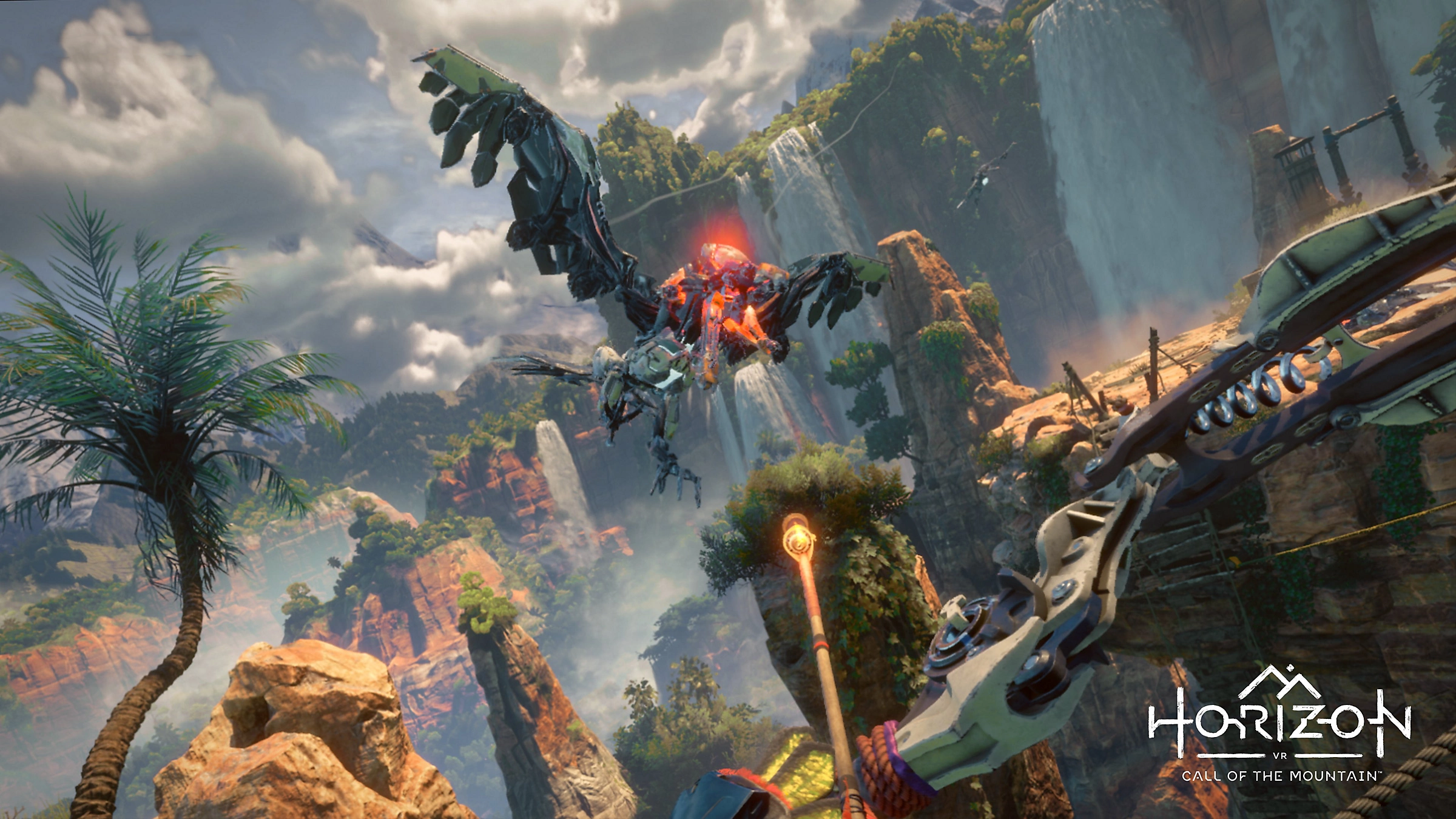
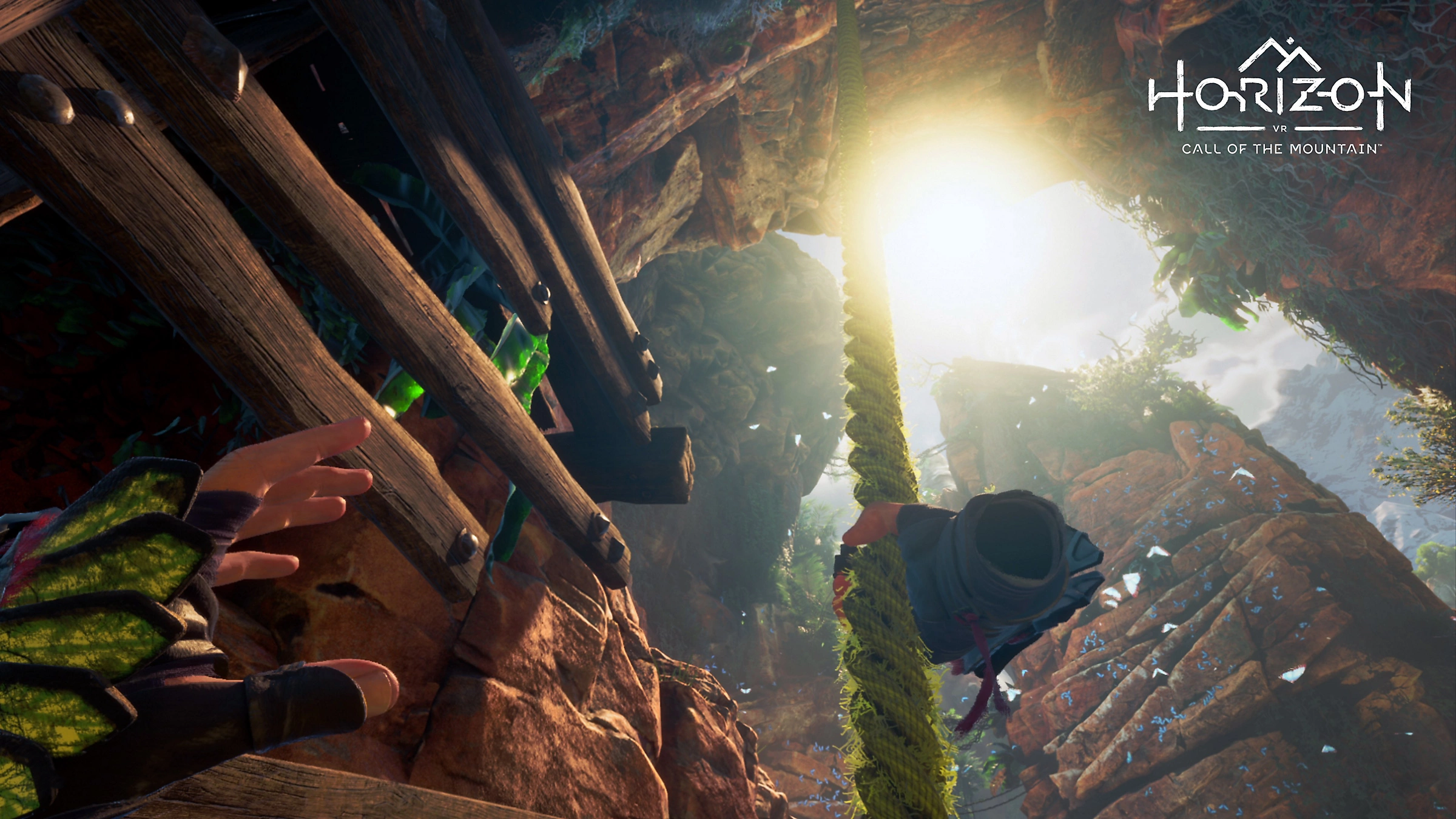
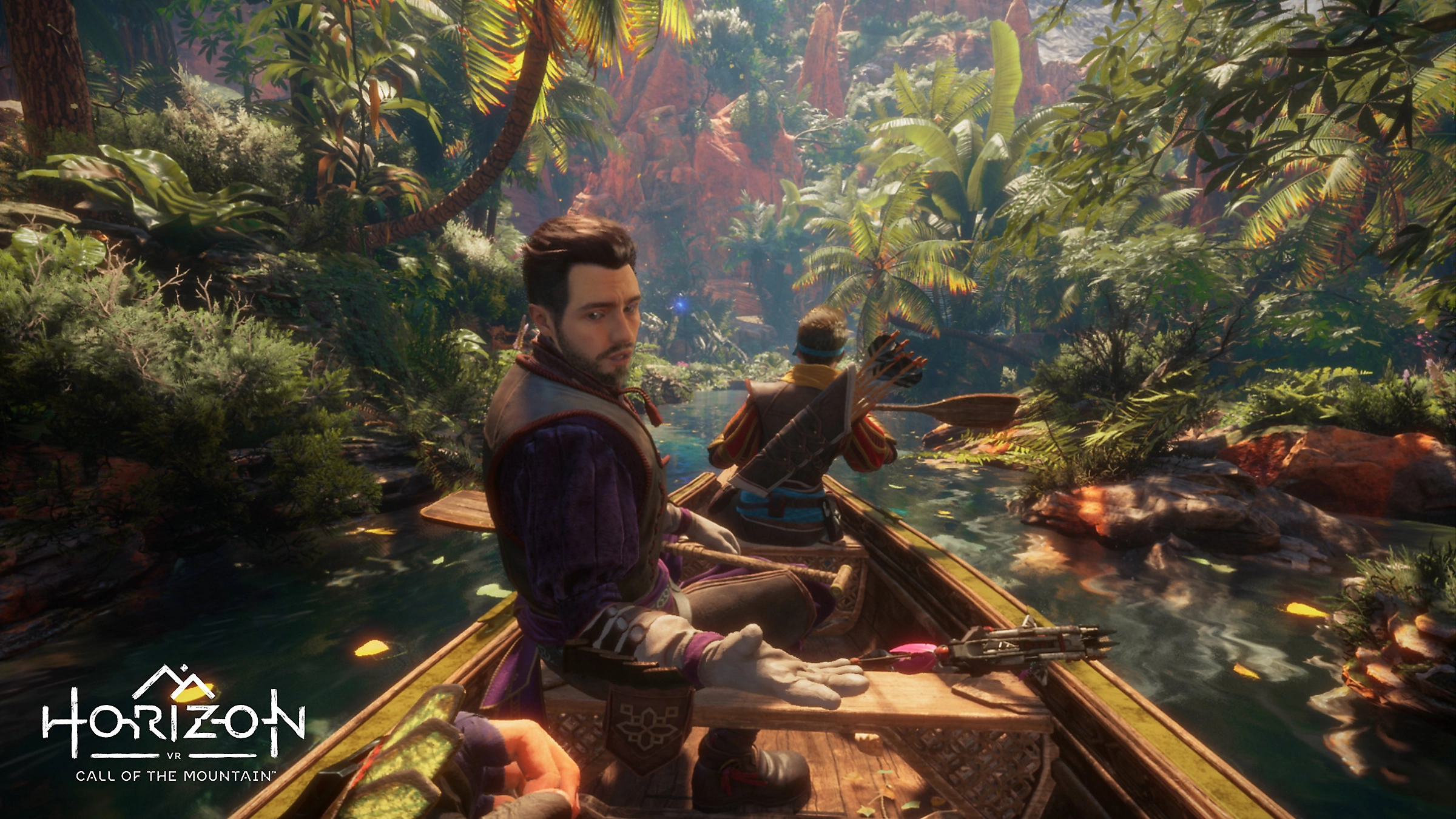
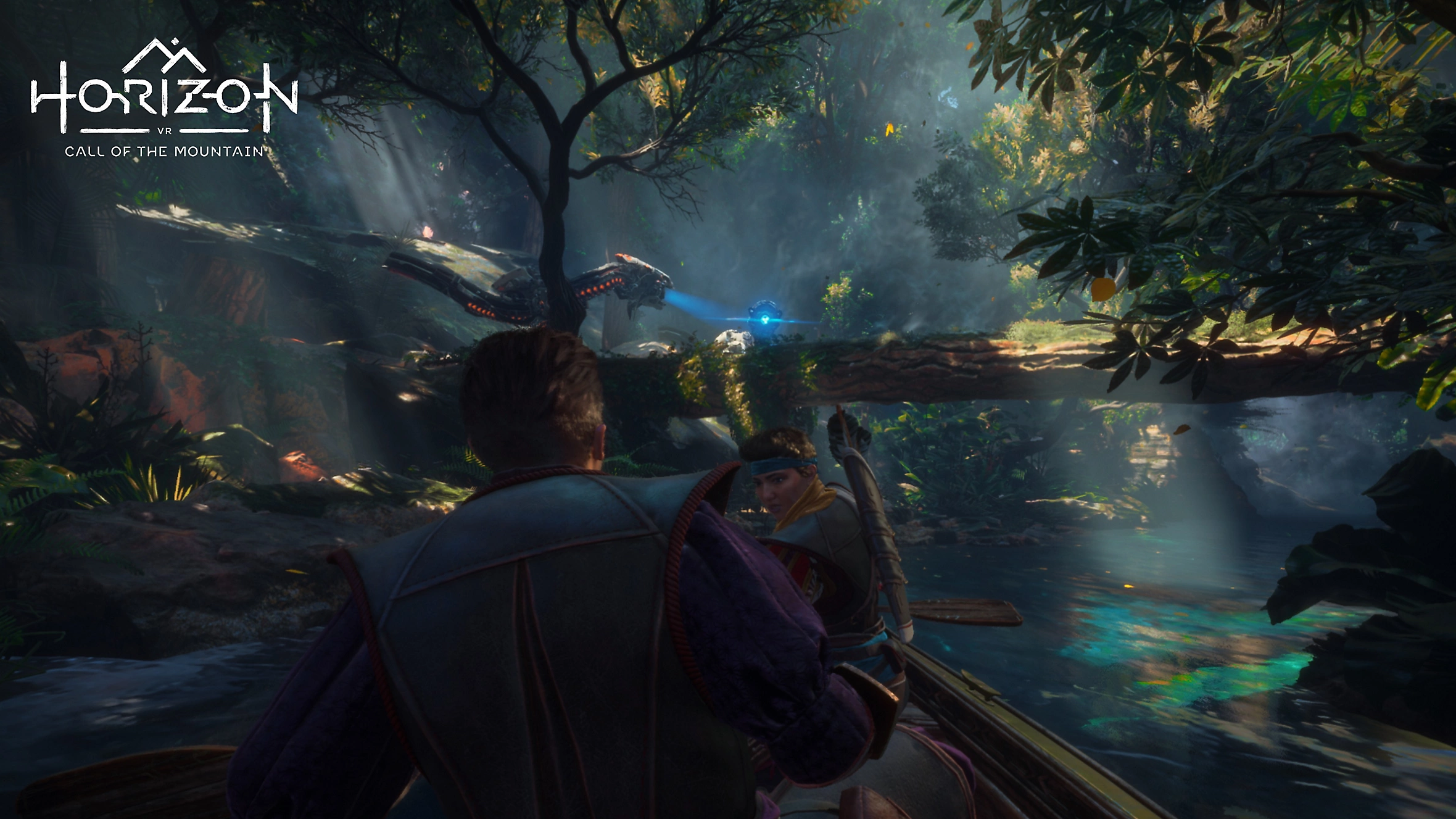
But here's the thing that I can't shake: Call of the Mountain will deliver six or so hours of play, but I didn't then jump back into that game because oh my gawd there's so much climbing. You climb, you climb some more, then a bit more, hoping for some more opportunity to shoot your bow. That, for me, left me with not a massive amount more to do with PSVR2 after finishing that game. Well, except want to show it off to anyone who came over to my house (without breaking the review embargo, obviously) because it's so damned impressive to look at.
Of course there are plenty of other games – I've listed the entirety of PSVR2's day-one titles here – but I'm largely blasé about them because they're mostly reworks of titles that have been available for some time already. And a large number of VR games fall into that inevitable category of cel-shaded sprites playing tennis or similar (AKA five minutes of fun and no more) and that I think has been virtual reality's downfall in the past.
What I'm hankering for are more exclusives. More story-driven play from IPs that Sony has and can deliver upon. Horizon sets a new benchmark with that (maybe save for Half-Life: Alyx, but that's only rumoured to launch on PSVR2 at this stage) and I want yet more of that. Therefore there's masses of potential for the future, but without that on day one I do wonder just how many people will plump the cash to buy PSVR2 in the first place.
Sony PSVR2 review: Verdict
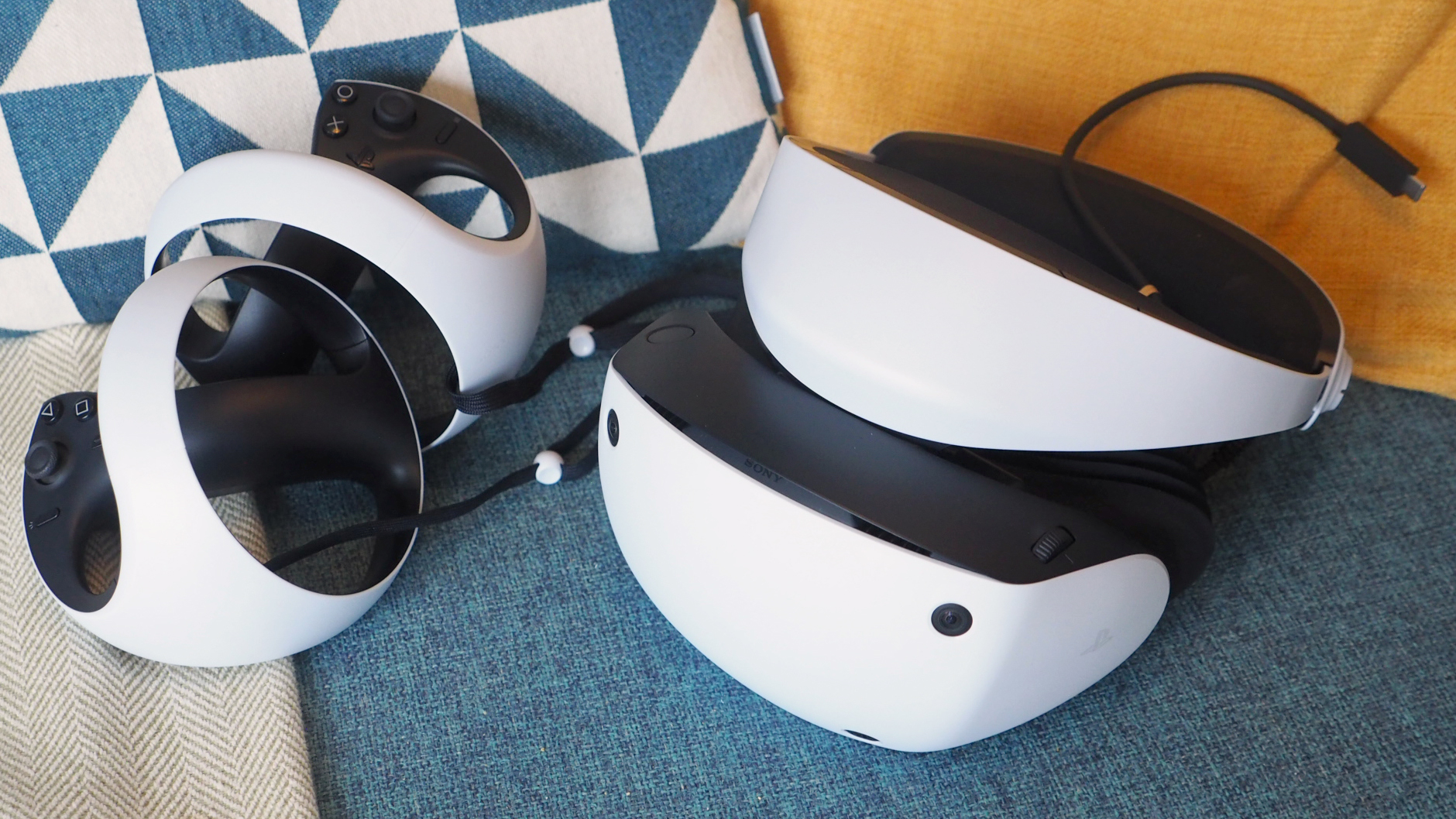
From the moment I first donned PSVR2 on my head and started playing Horizon: Call of the Mountain, it blew my mind. Sony has crafted a mighty impressive virtual reality kit for the PS5 that's entirely comfortable and has the scope to deliver truly immersive, impressively detailed games.
However, PSVR2 simply won't be for everyone: there's the potential for motion sickness (as with any VR); the day-one launch games are limited; the PSVR2 Sense controllers' battery lives are poor; and I can't help but return to my original virtual reality cynicism – where are all those killer games that make purchasing a headset in the first place worthwhile for most gamers?
So while I already can't imagine seeing a more impressive piece of tech grace my desk in 2023 (and it's only February!), I think PlayStation VR2 will split the crowd. It'll certainly whip up a virtual reality storm thanks to Call of the Mountain's arrival, but without a more assured list of future titles there's the undeniable risk that Sony will once again fail to move the VR needle – that PSVR2 is the most impressive VR kit ever made could well be inconsequential.
Also consider
Here's the thing about PSVR2: if you're a PlayStation 5 owner then, well, there is no virtual reality alternative. Not short of going and buying a PC and setting up a Vive Pro 2 anyway (which'd all cost you six times as much as the PlayStation VR2 headset). So as your one and only option there is no direct competition.

Mike is T3's Tech Editor. He's been writing about consumer technology for 15 years and his beat covers phones – of which he's seen hundreds of handsets over the years – laptops, gaming, TV & audio, and more. There's little consumer tech he's not had a hand at trying, and with extensive commissioning and editing experience, he knows the industry inside out. As the former Reviews Editor at Pocket-lint for 10 years where he furthered his knowledge and expertise, whilst writing about literally thousands of products, he's also provided work for publications such as Wired, The Guardian, Metro, and more.

